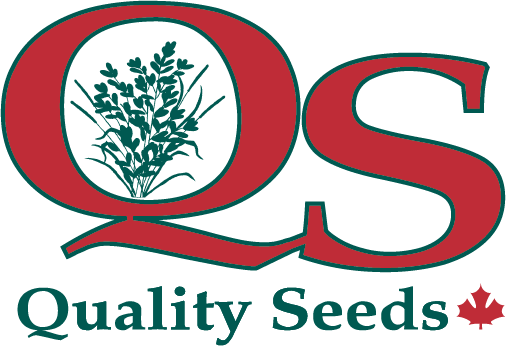Serious About Sod Spring 2019

Serious About Sod – Spring 2019
1. The Effect of Water pH, Hardness and Purity on Pesticide Performance.
2. Improving Root Health in Sod
3. New Fertilizer Products
4. Spring Checklist
1. The Effect of Water pH, Hardness and Purity on Pesticide Performance
In the nursery sod industry, as well as in all agricultural production, producers have at times experienced substandard performance when using and applying registered pesticides to their crop. These performance problems could be associated with the following issues:
a) Poor spray coverage
b) Improper timing
c) Using rates less than those on the label
d) Poor water quality
e) Pest resistance from overuse of a pesticide product over time
Water quality aspects affecting pesticide performance include the following:
a) Water pH
b) Water hardness
c) Water purity
Water pH
Pesticide performance can be greatly affected by the pH of the spray water, as outlined last year in Serious About Sod Spring 2018. Pesticides that are commonly used in nursery sod production, and the pH range in which they best perform, are:


Evidence suggests that spray solutions should be adjusted to a pH of 5.0-6.0 for optimum pesticide performance.
Water Hardness
A lot of poor pesticide performance has been the result of water hardness. Water hardness is determined by the amount of cations Calcium, Magnesium and Iron in the water. Water hardness, measured in ppm, is rated as:
0-114 = soft water
114-342 = moderately hard
342-800 = hard water
800+ = extremely hard water
Cations can affects pesticide performance and are listed in order of greatest to least potential:
Aluminum
Iron
Magnesium
Calcium
Sodium
Commonly used Phenoxyherbicides and glyphosate are very susceptible to water hardness, resulting in poor performance.
Water Purity
Suspended soil particles such as clay particles and algae can affect the performance of herbicides such as glyphosate (Roundup).
In conclusion, to improve the performance of pesticides, a water conditioner should be used in spray water. In the past, I know that many nursery sod growers have used BB5 Extra. This product is no longer available. However, a new water conditioner called “Disclose pH” is now available. This product does the following:
a) Acidifies alkaline water
b) Decreases the effects of water hardness
c) Has a built-in pH indicator
d) Has buffering capability to prevent over-acidification of water
e) Has a utility modifier which helps maintain integrity of the spray solution
When the spray water is properly conditioned, pesticides will be better at performing their intended purpose.
2. Improving Root Health in Sod
Nursery sod quality is determined by the health of the rooting system. Healthy roots will result in quicker sod establishment, a greener lush colour and good sod integrity at harvest. Good root production is the result of:
a) Good soil nutrition with emphasis on adequate levels of phosphorus, calcium, manganese and
boron.
b) Good soil structure with adequate drainage
c) No soil hardpan
Hardpan seems to be one of the major issues in sod production. Last Fall was extremely wet and if this Spring proves to be wet as well, compaction will be an issue, and aeration may be required in late May or early June.
To increase root mass, TrioMax was used in the past. This product is no longer available. Terra Drive is the new product to increase root mass and has more technology additives in its formulation. Many sod producers have applied TrioMax in the past on sod 3 weeks prior to harvest at 1L/acre to ensure sod lift. Terra Drive can be used the same way at 1.0 L/acre.
Where sod growers will need to harvest one year sod, please refer to Serious About Sod Spring 2018 for details.
3. New Fertilizer Products
There are 2 newer products available to nursery sod growers from various fertilizer retail outlets in Ontario:
a) AXAN -this is a newer ammonium nitrate coated with gypsum. This product supplies nitrogen,
calcium and sulfur, and will release a bit quicker that CAN. Where sod growers require earlier spring
green-up this product should be used on the very first sod to be harvested. It has a
nitrogen content of 27%.
b) AMIDAS -this is a urea product containing 40% Sulfur in the sulfate form. This product will be
useful where there is a sulfur deficiency in the soil and where only nitrogen source is to be applied.
4. Spring Checklist
a) Grubs -I have already seen some European grub chafer activity in nursery sod.
b) Diseases -Check all fields for Gray and Pink Snow Mould. Where found, apply Daconil for control.
Where fairy ring is found, 2 applications of azoxystrobin will be necessary to control this
disease.
c) Weeds -Check for broadleaf weeds. An application of a phenoxy 3-way blend such as Par III, Killex, or another brand will be necessary. Where poa, bentgrass or other undesirable grasses are found, Callisto is recommended.
Do not forget to use a water conditioner such as Disclose pH to ensure the proper performance of these herbicides.
If you have any questions or need some advice, please contact me.
Joe Uyenaka
Senior Agronomist –NutriAg
Cell: 705-791-9321
